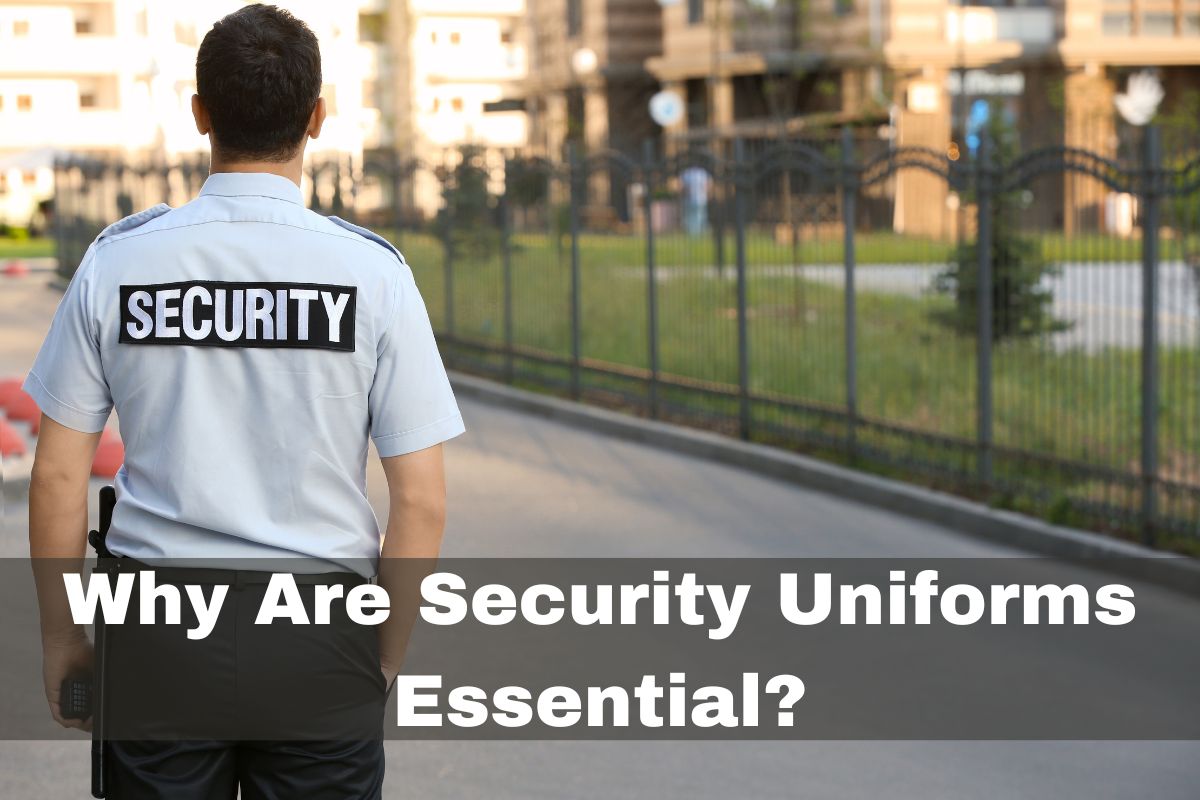July 30, 2024
Why Are Security Uniforms Essential?

Security uniforms are far more than simple work attire; they play a vital role in strengthening both the professionalism of security personnel and the safety of a facility. To highlight the true importance of security uniforms, it’s essential to explore the key functions they serve and the value they bring to effective security operations.
Professional Identification and Authority
Security uniforms are essential for professional identification, clearly distinguishing security personnel from the general public. This instant recognition is vital in both routine situations and emergency scenarios. A well-designed uniform conveys authority and reliability, enabling security staff to respond quickly and take control when needed. In busy settings like airports, shopping malls, and public events, the ability to identify security officers at a glance reduces confusion and ensures timely action. Beyond functionality, uniforms also project a professional image, reinforcing the credibility and seriousness of security operations.
Psychological Deterrent
The presence of uniformed security guards serves as a significant psychological deterrent to potential wrongdoers. The sight of a uniform can discourage criminal activities by signaling that the area is actively monitored and protected. This deterrent effect is amplified in places like retail stores, where shoplifting can be a persistent issue. A visible security presence reduces the likelihood of theft and vandalism, fostering a safer environment. The psychological impact extends to employees and visitors as well, enhancing their sense of safety and encouraging them to adhere to rules and regulations.
Enhanced Professionalism and Confidence
Uniforms play a vital role in enhancing the professionalism of security personnel. Wearing a uniform instills a sense of duty and pride, encouraging guards to remain more diligent and attentive in their roles. A professional appearance also reassures clients and the public that security is being managed with seriousness and reliability. Furthermore, uniforms strengthen the confidence of security guards by reinforcing their authority and responsibilities. This boost in morale often translates into improved performance, enabling guards to respond more decisively and responsibly in critical situations.
Safety and Functionality
Security uniforms are designed with practicality and safety in mind. They often feature high-visibility elements, durable materials, and functional designs tailored to the demands of security work. High-visibility vests, reflective strips, and bright colors ensure that security personnel are easily seen, even in low-light conditions. This visibility is crucial for directing traffic, patrolling, and responding to incidents. Functional aspects, such as multiple pockets and loops, allow guards to carry essential tools like radios, flashlights, and first aid kits, ensuring they are prepared for any situation. The durability of the uniforms also means they can withstand the physical demands of the job, providing long-lasting protection and comfort.
Brand Image and Consistency
For businesses and organizations, security uniforms are a key component of brand image and consistency. Customizing uniforms with company logos and colors helps to create a unified and professional appearance. This branding not only reinforces the company’s identity but also instills a sense of pride and belonging among the security team. Consistent uniforms contribute to a cohesive look, making security personnel easily recognizable as part of the organization. This visual consistency can enhance the overall customer experience, as visitors feel reassured by the visible presence of a coordinated and professional security team.
Regulatory Compliance
In many areas, security uniforms are legally mandated, making compliance with these regulations crucial. Proper uniforms ensure that security staff are easily distinguishable from civilians while helping organizations avoid legal complications. Regulatory standards often outline specific requirements—such as identification badges, approved color schemes, and official insignia—to create a consistent and professional appearance. By following these guidelines, security teams not only meet legal obligations but also strengthen their credibility and professionalism, offering clients and the public greater confidence in their services.
Public Reassurance
The visible presence of uniformed security personnel provides significant reassurance to the public. Knowing that trained professionals are on hand can alleviate concerns and enhance the overall experience for visitors, employees, and customers. In settings such as shopping centers, hotels, and public events, the presence of uniformed guards can create a welcoming and secure atmosphere. This reassurance is particularly important in high-risk areas or during times of heightened security, where the visibility of a dedicated security team can help to calm fears and ensure that everyone feels safe and protected.
Factors to Consider When Buying Security Uniforms
When purchasing security uniforms, it’s essential to ensure they meet operational needs and present a professional image. Here is a comprehensive guide on the important factors to consider:
Comfort and Fit
Comfort is crucial for security personnel who often endure long shifts. Uniforms should provide ease of movement and be made from breathable materials to maintain comfort throughout the day. Proper sizing is essential, and adjustable features can accommodate different body types. This ensures that security personnel can perform their duties without discomfort or restriction.
Durability
Security uniforms must withstand rigorous daily use. High-quality fabrics that are resistant to wear and tear, combined with reinforced stitching in high-stress areas, ensure longevity. Durable uniforms reduce the frequency of replacements, saving costs over time and maintaining a professional appearance.
Weather Appropriateness
The climate where security personnel operate significantly influences uniform choice. For hot climates, lightweight, moisture-wicking fabrics help keep personnel cool and dry. In colder regions, uniforms should include insulated options and layers to maintain warmth. Ensuring weather-appropriate uniforms enhances comfort and effectiveness in various conditions.
Functionality
Uniforms should be designed with practical features that support the job’s demands. This includes ample pockets for carrying essential tools, loops or clips for radios and other equipment, and easy access to items without compromising security. Functional uniforms enhance efficiency and readiness, allowing personnel to perform their tasks more effectively.
Visibility
High-visibility uniforms or those with reflective elements are crucial for safety, especially in low-light conditions. Bright colors and reflective strips enhance visibility, reducing the risk of accidents. Visibility is essential for ensuring the safety of security personnel and those they protect.
Professional Appearance
Uniforms should project a professional image that instills confidence and respect. Designs should align with the organization’s brand, incorporating logos and colors appropriately. A neat and professional appearance also deters potential security threats by conveying authority and preparedness.
Ease of Maintenance
Uniforms should be easy to clean and maintain. Machine-washable fabrics that resist stains and wrinkles ensure that personnel can quickly prepare their uniforms for the next shift. Easy maintenance ensures that uniforms remain presentable and hygienic without excessive effort.
Cost
While quality should not be compromised, it’s essential to consider the budget. Balancing the need for durable, high-quality uniforms with cost-effectiveness is crucial. Investing in better-quality uniforms can result in long-term savings due to their extended lifespan and reduced replacement frequency.
Compliance with Regulations
Ensure that the uniforms comply with any relevant industry standards and regulations. This includes safety standards, especially for roles that require specific protective features. Adhering to rules not only ensures safety but also helps avoid potential legal issues.
Customization Options
Customization can enhance the utility and branding of security uniforms. Consider options for personalization, such as embroidered names, company logos, and department identifiers. Customized uniforms help in quick identification and foster a sense of belonging among personnel.


